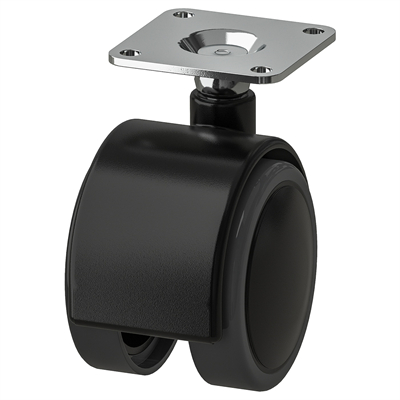Caster trends in furniture design have evolved over the years, reflecting changes in interior design preferences, functionality, and sustainability. Here are some current caster trends in furniture design:
- Hidden Casters: One of the emerging trends in furniture design is the use of hidden or recessed casters. These casters are concealed within the furniture’s frame or base, giving the piece a sleek and minimalist appearance. Hidden casters maintain the overall aesthetic of the furniture while providing mobility when needed.
- Antique-Style Casters: Antique-style casters with vintage finishes, such as antique brass or aged patina, have gained popularity. These casters add a touch of nostalgia and a classic look to modern furniture pieces, creating a unique and charming design element.
- Colored Casters: Colored casters are being used to add a pop of color and personality to furniture designs. These colorful casters can complement or contrast with the furniture’s color scheme, adding vibrancy and visual interest.
- Industrial and Rustic Casters: Furniture designers are incorporating industrial and rustic-style casters into their creations. These casters often have a raw and weathered appearance, enhancing the rustic or industrial aesthetic of furniture pieces.
- Sustainable Materials: With the growing emphasis on sustainability, furniture designers are opting for casters made from eco-friendly materials, such as recycled plastics or metals. These sustainable casters align with the broader green design trend.
- Customization: Many furniture designers and manufacturers offer customizable caster options, allowing customers to select the type, size, and finish of casters that best suit their design preferences. This level of personalization enhances the individuality of furniture pieces.
- Low-Profile Casters: Low-profile casters with minimal wheel height are favored for furniture that needs to maintain a lower silhouette. These casters offer both mobility and stability while keeping the furniture closer to the ground.
- Locking Casters: Furniture designers are incorporating locking casters into their pieces to provide added functionality. Locking casters allow users to secure the furniture in place when needed, enhancing stability and safety.
- Non-Marking Casters: Non-marking casters are essential for protecting delicate flooring surfaces. Furniture designers are opting for these casters to ensure their pieces do not leave scuffs or marks on floors.
- Designer Collaborations: Some furniture designers are collaborating with caster manufacturers to create unique, signature caster designs that are exclusive to their furniture collections. These custom caster designs can become iconic elements of the furniture pieces.
- Mixed Materials: Furniture designers are combining various materials, such as wood, metal, and glass, with casters to create versatile and visually interesting furniture. These combinations provide both functionality and aesthetic appeal.
Caster trends in furniture design are continually evolving to meet the demands of modern consumers and interior design preferences. Whether it’s for added functionality, style, or sustainability, casters are integral to creating furniture that meets the needs and desires of today’s consumers.


